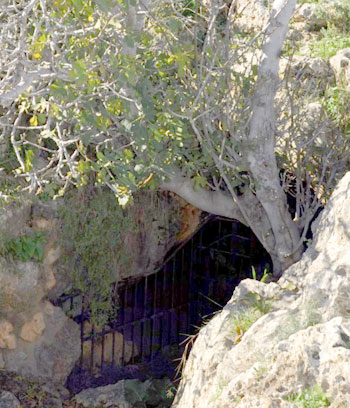 One of the most famous and mysterious caves of Crete, the cave of Eileithia is located 7 km east of Heraklion and 1 km southeast of Amnissos. It was discovered at the end of the last century and the locals named it as “Neraidospilios”. It was a place of worship, as it has been proved by the excavations, from the Neolithic Age to the 5th century BC.
One of the most famous and mysterious caves of Crete, the cave of Eileithia is located 7 km east of Heraklion and 1 km southeast of Amnissos. It was discovered at the end of the last century and the locals named it as “Neraidospilios”. It was a place of worship, as it has been proved by the excavations, from the Neolithic Age to the 5th century BC.
Eileithia was a secondary deity of Greek mythology, but this fact did not downgrade her importance, since she was worshiped by Minoans many centuries before the existence of the Twelve Olympians. She is one of the oldest deities known by their name and was the goddess of birth and parturition pains. According to Greek mythology, she helped women to give birth to their babies and stand the pains of birth. Before and after childbirth, women offered her various oblations. They also worshiped her as a goddess who takes care of newborns.
The goddess of parturition was worshiped a lot in Crete as a symbol of maternity and fertility and her cult was widespread and it preserved until the Hellenic and Early Christian times. Her sanctuaries were mainly found in caves something that reveals the primordial worship of the deity. Reports of this cave were made by Homer, who locates the port of Amnissos based on the cave, a fact that shows its importance in the ancient world. The cave was used as a place of worship and healing by the Minoan sailors for thousands of years ago. It was believed that this cave was the birthplace of the goddess Hera.
The cave is oblong (60 m. long and 9-12 m. wide) and within it there are remnants of a large, rectangular, stone altar encircled by anthropomorphous stalagmites on which the pregnant women rubbed their bellies in order to have a good parturition.